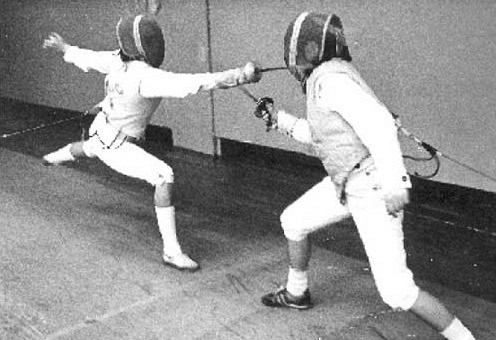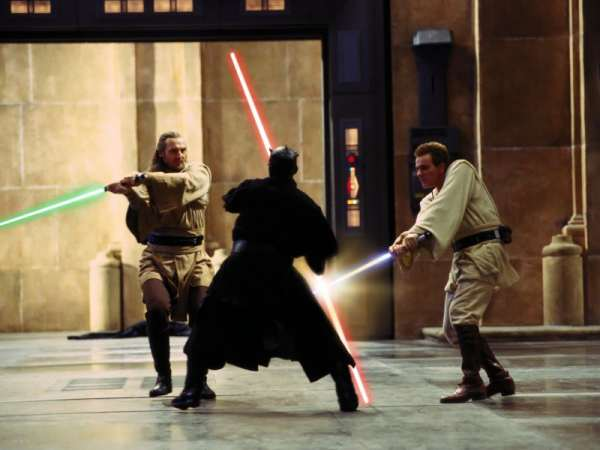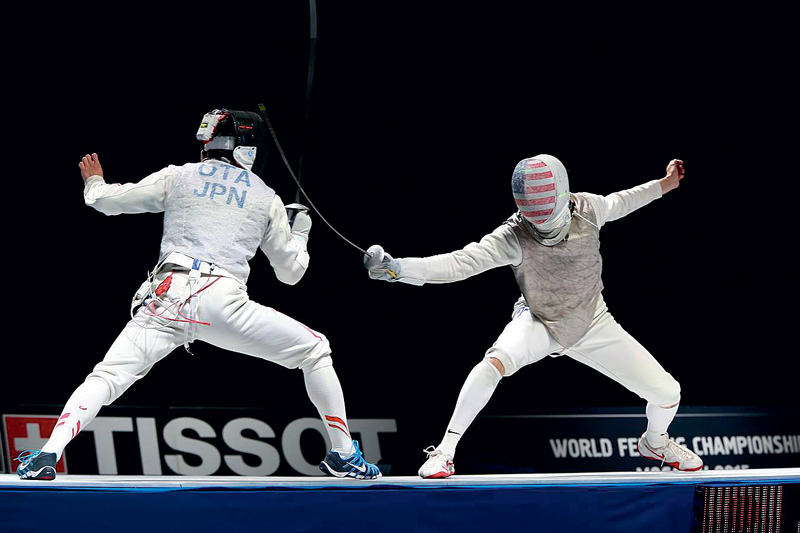Differences between Sports and Stage Fencing
 The main difference between sports and stage fencing is that in sports fencing, the result is a victory in a duel, and in stage fencing, an assessment of the audience. This defines the different tasks that stage and sports fencing is designed to solve.
The main difference between sports and stage fencing is that in sports fencing, the result is a victory in a duel, and in stage fencing, an assessment of the audience. This defines the different tasks that stage and sports fencing is designed to solve.
The task of stage fencing is to teach future actors to conduct a believable, aesthetically verified, expressive duel, filling it with sculptural positions and scenically spectacular movements. The task of sports fencing is the formation of the athlete’s technical and tactical skills, general physical and psychological qualities that allow him to prevail over rivals in fights.
The fundamental difference between a stage, staged fight and a sports fight is a complete ban on improvisation for participants in fights. Participants in a staged battle are not opposing rivals with the goal of defeating the opponent, as is the case in a sports match, but partners interacting to achieve a common goal. On the stage, as in front of the movie camera, all the actions of fencers should be rehearsed in advance. More precisely, the movements of fighters with weapons and movements around the battlefield are learned as gymnastic or dance combinations, where everyone knows the future “maneuvers” of the partner. All tactics of the fight and real “tricks” for its image are thought out by the director and actors before they are set, then they are embodied in pre-selected certain actions, and during rehearsals they are brought to reliable standards for their implementation and repetition.
Only after the attention and thinking of the performers ceases to be distracted from preserving the intended sequence and technique of motor actions, does the true creativity of the actors begin to embody the stage image in the process of the duel.
In addition, the difference also manifests itself in the fact that only two rivals with the same weapons always participate in a sports duel, the start of a battle is strictly fixed and the outcome of the duel is not known to anyone in advance. While in the battle the scenic number of fencers, their appearance on the battlefield and weapons, behavior during the battle and the sequence of elimination from it, as well as the names of the winners and losers are determined by the plot.
In addition, staged combat often uses household items. Hand-to-hand fights of characters armed with various household items can often be seen in both historical and modern plays and movies. At the same time, in the hands of the participants in the battles, many items completely replace edged weapons. This means that they should act using the prevailing special technique of attacks and defenses, as well as their situational varieties. And this is one of the manifestations of a very interesting feature of the “relationship” between stage and sports fencing – the completely opposite signs, upon closer examination, appear to have common foundations …
Household items, bearing in mind their size, can be divided into two categories: long (shovel, pitchfork, clubs, grasping), which are held with two hands, and short (cane, poker, ladle, frying pan, etc.). Accordingly, the methods of owning these battle tools will resemble techniques designed for a light short blade or a heavy, two-handed one.
Thus, the combat stance, movements, methods of attack and defense should largely resemble actions with real weapons. The rebounds of attacks in the internal and external sectors are similar to the defenses of the 3rd and 4th, used in battles on chopping and stabbing swords, and frontal lifting of the whole object will be required to protect against a blow to the head. It is also possible to hit and jab at the pace of answers, not only directed towards the enemy with the pointed end of the subject, but also the opposite end part. It is quite logical during such fights and kicks, head, torso, which is completely unacceptable in a sports fight.
Another difference between sports fencing and stage fencing is that, according to the rules of sports fights, rivals are against each other, facing each other. And in the staged fights on stage and in the cinema, the position “opponent from behind” and “opponent from the side” is quite often encountered, and not just one, but several, which requires the use of such techniques of maneuvering and interaction with partners that are not found in sports fights. The stage-by-stage realization of such episodes is possible only in compliance with certain provisions, without which it is difficult to create a real atmosphere of group combat. Tactically justified behavior of the participant during the battle, remaining in the minority, requires him, first of all, to take actions to ensure security against threats from the rear and flanks. Therefore, in order to reduce the likelihood of attacks from behind and from the side, he needs to constantly move and maneuver using the terrain and its terrain as obstacles in the way of opponents. If the battle takes place in a limited space of rooms, then you can use the walls and large pieces of furniture.




